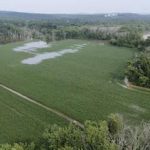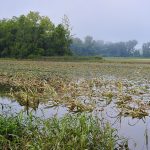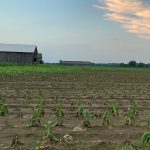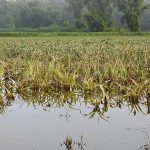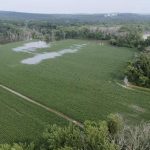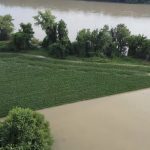Updated on July 24, 2023
Many of our communities are affected by the statewide flooding from the Connecticut River after heavy rains in New York and Vermont. Flooding conditions continued after more rain arrived. UConn Extension has the following resources to support agricultural producers, consumers, residents, and others affected. You can also sign up for mobile weather alerts by visiting weather.gov and CT Alerts. Anyone in a Disaster area can use the Ready.gov disaster recovery resources.
Ask a Question
UConn Extension provides answers you can trust. Our educators can also connect with agricultural producers, residents, and businesses individually. Ask us a question.
Agricultural Producers
Agricultural lands in central and northwestern Connecticut have flooded. The examples below are courtesy of farms along the Connecticut River.
Soil and Water Testing
Soil testing can help determine the extent of damage and any soil remediation needed. Visit our soil lab online for more information.
Water testing is also advised in some situations. Visit our website for more resources on how to get water tested in Connecticut.
State and Federal Reporting
In an effort to better understand the scope of the situation, we are asking producers to share estimated losses with us through our online reporting tool. This data will be shared with USDA Farm Service Agency and UConn Extension. By filling out this information it will assist these entities in determining if a disaster declaration can be obtained. Your farm name and contact information is not required, but if you would like to be contacted, please share that.
If you have not done so, please also contact your local Farm Service Agency county office to report your damages as well as your insurance agent to report impacts for covered crops. USDA disaster assistance information can be found on farmers.gov, including USDA resources specifically for producers impacted by flooding. For FSA programs eligibility, producers should contact their local USDA Service Center.
Food Safety
UConn Extension is part of the Produce Safety Alliance, and there are guidelines for flooded farms. We also recommend reviewing our farm worker training video series (y en Español) as the principles will help guide farm recovery after a flood.
Equine
Equine owners also need to be cognizant of disaster preparation, especially floods, and we have specific recommendations for these situations as well as on preparing for equine disasters.
Residents
Our team offers the following advice on extreme flooding:
Recommendations include: avoid areas with extreme flooding, as little as six inches of water can cause problems, do not drive through flooded water, check weather forecasts, and sign up for mobile alerts.
Flooding and erosion also cause issues on beach properties. Our Sea Grant program has a checklist for coastal hazards.
There are emergency preparedness resources for all residents available at our Adapt CT program. Coastal homeowners and businesses can also use resources specifically made for their situation.
Food Safety
Flooding sometimes impacts homes and gardens too. We have the following resources to help in those situations:
- Residential gardening (including vegetables) after flooding
- The safety of food and water after a flood (including well/drinking water)
- Fruit and vegetable food safety from flooded areas
- Food safety after a power outage (in the event that a power outage accompanies a flood)
Soil and Water Testing
Soil testing can help determine the extent of damage and any soil remediation needed. Visit our soil lab online for more information.
Water testing is also advised in some situations. Visit our website for more resources on how to get water tested in Connecticut.
Municipalities
We have programs to help municipalities with stormwater and flooding, including the MS4 (Municipal Separate Storm Sewer Systems) and the Adapt CT program for climate adaptation, including flooding in coastal and other communities. There are also fact sheets available:
Governmental Resources
Many state and national organizations have programs and resources that can help with extreme flooding:
- USDA RMA (Risk Management) Emergency Loss Procedures
- USDA Rural Development Programs
- USDA Disaster Resistance
- USDA NRCS Emergency Watershed Protection
Resources from Other Extension Systems
From the National Healthy Homes Project
Putting People First is the focus so they will protect their health during the cleanup and restoration process.
Thanks to the National Center for Healthy Housing (NCHH) and Enterprise Community Partners, A Field Guide for Flooded Home Cleanup (also available in Spanish) has received a makeover. The widely-used guide was first developed nearly 15 years ago to teach safe mold removal practices in hurricane-damaged homes.
In addition, NCHH has a free online training course to educate homeowners and contractors in mold removal safety.
The Rebuild Healthy Homes Guide was developed to help homeowners, volunteers, and other workers to restore damaged homes in a way that puts people first. It includes how-to methods, tips, and improvement ideas for safe restoration that result in not just a livable dwelling, but a healthy home that offers even more than before.
